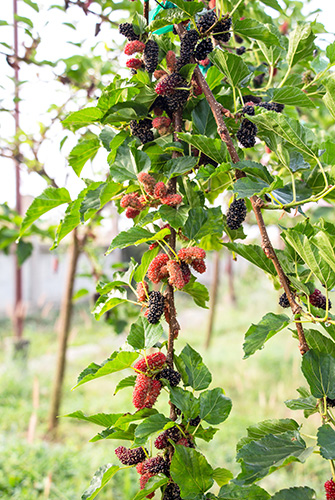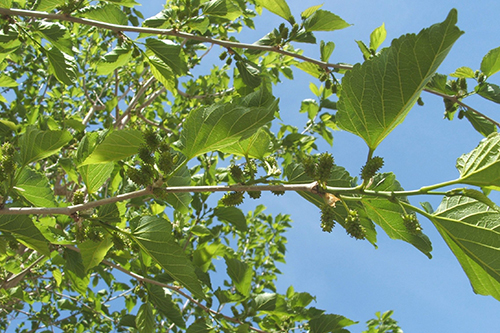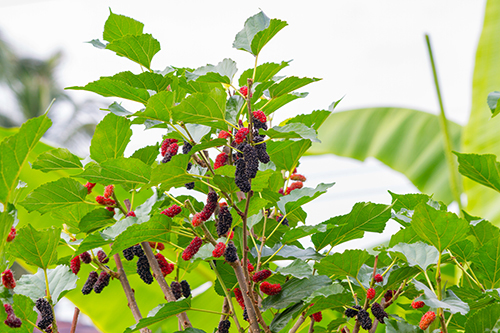Red Mulberry
Morus rubra
The Red Mulberry occurs throughout the state. Although this species is our only native mulberry, the similar introduced White Mulberry has become widely naturalized. The Red Mulberry is a medium-sized tree, rarely reaching 70 feet high with a trunk two feet in diameter, and often grows in the understory. It prefers rich soils and is nowhere abundant.
The bark is rather thin, dark grayish brown, and peels off in long narrow flakes.
Deciduous leaves are alternate, thin-textured, rounded or somewhat heart-shaped at the base, and pointed at the apex, with blunt teeth along the margin. They are three to five inches long, rough hairy above and soft hairy beneath. Often some of the leaves, especially on young trees and vigorous shoots, are mitten-shaped or variously lobed.
Separate male and female flowers may occur on the same or different trees. Flowers are borne in catkin-like clusters, with male clusters longer than female ones. The mature fruits are dark red or purplish, sweet, edible, and greatly relished by wildlife as well as by humans. They resemble blackberries with a fibrous core, but without large seeds.
Wood of the Red Mulberry is rather light, soft and not strong, pale orange-yellow, and very durable in contact with the soil. The tree is sometimes planted for fence-posts and to furnish food for birds.
Visit our Tree Campus homepage for more information.
Tree information provided with permission of the Florida Department of Agriculture and Consumer Services for more information visit https://www.fdacs.gov/.




